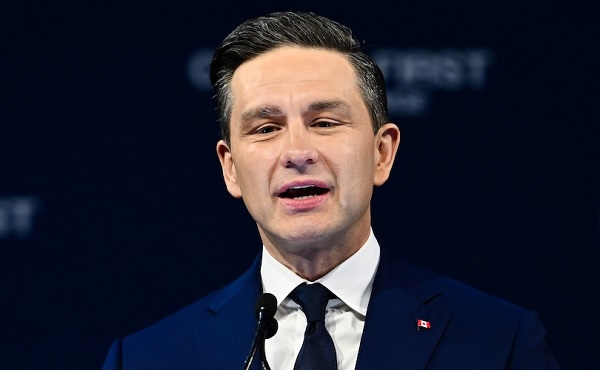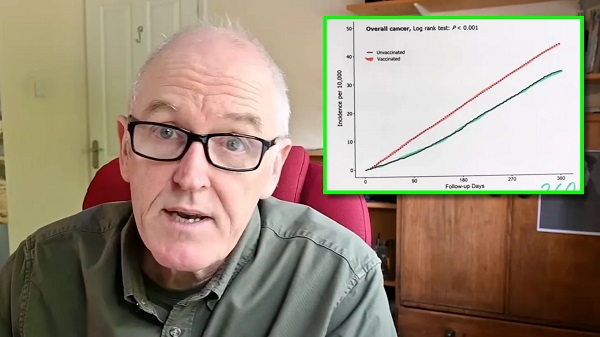International
Trump’s executive order against flag burning sparks free speech debate

From LifeSiteNews
Trump’s latest executive order started a debate among conservatives about free speech and the limits of executive power.
President Donald Trump set off a brand new debate about free speech and executive power Monday with an executive order concerning the burning of the American flag, complicated all the more by comments declaring it went much further than the actual text.
The order tasks the U.S. Attorney General with “prioritiz[ing] the enforcement to the fullest extent possible of our Nation’s criminal and civil laws against acts of American Flag desecration that violate applicable, content-neutral laws, while causing harm unrelated to expression, consistent with the First Amendment,” such as violent crimes, hate crimes, “open burning restrictions, disorderly conduct laws, or destruction of property laws.”
It also requires the blocking or termination of “visas, residence permits, naturalization proceedings, and other immigration benefits” of foreign nationals who “have engaged in American Flag-desecration activity under circumstances that permit the exercise of such remedies pursuant to Federal law.”
The order essentially just tasks federal law enforcement with reviewing cases for instances in which the American flag is desecrated in the course of committing an established crime. However, speaking to the press from the Oval Office before signing it, the president claimed it would do something far more dramatic.
President Donald J. Trump signs an Executive Order to restore respect, pride, and sanctity to the American flag, and prosecute those who desecrate this symbol of our freedom, identity, and strength. 🇺🇸 pic.twitter.com/wG54eULeGh
— Rapid Response 47 (@RapidResponse47) August 25, 2025
After panning the U.S. Supreme Court’s 5-4 ruling in 1989’s Texas v. Johnson that deemed flag-burning a form of protected speech as a “very sad court,” Trump claimed that flag-burning “incites riots at levels that we’ve never seen before.”
Therefore, he said, “what the penalty is going to be if you burn a flag, you get one year in jail. No early exits, no nothing. You get one year in jail, if you burn a flag, you get — and what it does is incite to riot — I hope they use that language … incite to riot and you burn a flag, you get one year in jail, you don’t get ten years. You don’t get one month. You get one year in jail. And it goes on your record.”
Contrary to Trump’s declaration, his order does not make flag-burning a standalone federal crime or define any penalty for it. Constitutionally, executive orders can only direct the implementation of existing laws or federal rules under delegated authority. Creating all-new federal crimes and punishments are powers reserved for the lawmaking branch of the federal government, Congress.
Confusion about the order itself aside, it sparked a debate about the underlying issue of flag-burning and whether it should be protected as freedom of expression. The Johnson precedent, in which stalwart conservative Justices Antonin Scalia and William Rehnquist landed on opposite sides, has not been seriously challenged in more than three decades, but some prominent MAGA figures followed Trump by declaring their opposition to it.
“Antonin Scalia was a great Supreme Court Justice and a genuinely kind and decent person,” Vice President JD Vance said, but “Texas v. Johnson was wrong and William Rehnquist was right.” Human Events senior editor Jack Posobiec claimed the First Amendment was only meant to protect literal “’speech,’ meaning spoken or written,” and not the broader category of expression (a standard which could weaken protections against being forced to create other forms of non-speech expression, such as LGBT cakes).
Others expressed their disapproval. Libertarian Rep. Thomas Massie (R-KY) said flag-burning is “covered by the First Amendment to the United States Constitution.” National Review legal analyst Andy McCarthy said the order was “ill-conceived” in its attempt to tie flag-burning to “incitement.” Stanford and UCLA law professor Eugene Volokh predicted the order would be deemed a “a content-based, indeed viewpoint-based, enforcement policy” and would therefore be struck down.
Still more tried to split the difference, not endorsing Trump’s position while attempting to minimize its significance and/or claim it was yet another multi-level chess move. Daily Wire reporter Ryan Saavedra surmised that Trump “knows it’ll get shot down in court but it will stoke Democrats into torching American flags going into the midterms and the people will be repulsed seeing that.”
“Anti-woke” journalist Chris Rufo said he was “sympathetic to the argument that burning the American flag is protected speech,” but was “not going to work myself into a state of hysteria about Trump’s executive order” while localities were punishing people for destroying LGBT “pride” flags. Many replied that while left-wing officials often pursue inflated punishment for damaging LGBT symbols such as “hate-crime” enhancements, the fundamental legal question is whether someone is destroying a flag they own or vandalizing someone else’s property.
Regardless, taking a stand against flag-burning has long been a popular move for politicians, with prominent Democrats such as Hillary Clinton and Joe Biden having advocated bans in the past.
“In a 2021 poll from the Knight Foundation and Ipsos, only 31% of Americans agreed that people should be allowed to burn the American flag,” CNN reports. “More recently, two-thirds of Americans said in a YouGov/CBS poll published in July that flag burning should be against the law. Back when the Supreme Court ruled that flag burning was protected speech, it was an unpopular decision. More than two-thirds of Americans supported a constitutional amendment to outlaw flag burning, according to polling at the time, although only a minority saw that issue as a very important one.”
International
Signed and sealed: Peace in the Middle East
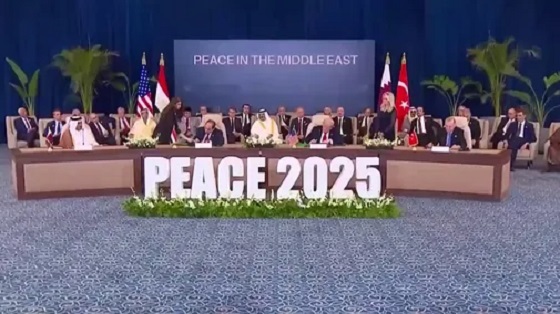
Quick Hit:
President Donald Trump on Monday signed a landmark peace agreement ending the two-year Gaza war, declaring “peace in the Middle East” as dozens of world leaders joined him in Sharm el-Sheikh, Egypt. The deal inks Trump’s 20-point plan, which secured the release of all remaining Israeli hostages and Israel’s gradual withdrawal from Gaza.
Key Details:
- “At long last, we have peace in the Middle East,” Trump said during his remarks. “It’s something people have prayed for over generations, and now those prayers have been answered.”
- The signing comes after Hamas released the final 20 living hostages on Monday, following Israel’s weekend withdrawal from portions of Gaza. Trump said mediators will now move forward with phases two through four of his 20-point plan, which focuses on rebuilding Gaza and expanding regional cooperation.
- Pakistan’s Prime Minister Shehbaz Sharif, who attended the ceremony, hailed Trump as “a man of peace” and announced Pakistan’s nomination of the president for the Nobel Peace Prize.
PEACE IN THE MIDDLE EAST: SECURED pic.twitter.com/tpApdOOT2O
— MxM News (@mxmnews) October 13, 2025
Diving Deeper:
President Donald Trump on Monday celebrated what he called the “end of an age of terror and death” in the Middle East as he signed a sweeping peace agreement bringing an official close to two years of fighting in Gaza. The ceremony, held in the Egyptian resort city of Sharm el-Sheikh, featured dozens of world leaders and regional envoys gathered under banners reading “Peace in the Middle East.”
“This is the day that people across this region and around the world have been working, striving, hoping, and praying for,” Trump said. “Together, we have achieved the impossible.”
The signing followed the release of the last 20 living Israeli hostages by Hamas and Israel’s repositioning of its forces. Trump said the next phases of his 20-point peace framework would focus on reconstruction and long-term normalization across the region.
“This breakthrough is more than the end of the war in Gaza,” Trump said. “With God’s help, it will be the new beginning for an entire, beautiful Middle East.” He expressed optimism that new nations would soon join the Abraham Accords, the normalization agreements first launched during his first term.
“We’re going to get a lot of people joining the Abraham Accords,” Trump said. “Then you had the Biden administration, the worst in history, and they did nothing on that — or on anything else.”
Under Trump’s first term, Bahrain, Morocco, Sudan, and the United Arab Emirates joined the Accords. With the Gaza war ended and Iran’s nuclear ambitions curtailed after U.S.-backed Israeli operations earlier this year, Trump said “all the momentum now is toward a great, glorious, and lasting peace.”
He credited Secretary of State Marco Rubio for helping negotiate the agreement over nine months of talks, predicting Rubio “will go down as the greatest Secretary of State in U.S. history.”
Pakistan’s Prime Minister Shehbaz Sharif joined Trump on stage, calling Monday “one of the greatest days in contemporary history” and praising Trump for leading “untiring efforts to make this world a place to live with peace and prosperity.” Sharif added that Pakistan had formally nominated Trump for the Nobel Peace Prize.
Trump concluded his remarks by casting the deal as a new foundation for the region’s future: “If we do this together, the Middle East will become what it was always meant to be — the crossroads of faith, commerce, and humanity. This will be the geographic center of the world.”
Business
Finance Titans May Have Found Trojan Horse For ‘Climate Mandates’
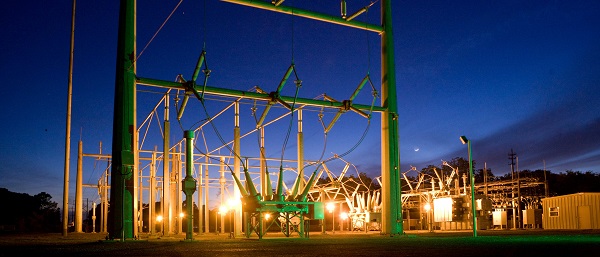

From the Daily Caller News Foundation
By Audrey Streb
Major global asset managers including BlackRock and Blackstone have been looking to buy power utilities across America in a move that some industry insiders warn could harm consumers, raise electricity costs and advance a climate-driven energy agenda.
In recent months, Blackstone reportedly sought regulatory approval to buy utilities in New Mexico and Texas all while a BlackRock-led group won approval Friday to purchase a major utility in Minnesota. While BlackRock and other huge asset managers have distanced themselves from environmental, social and governance (ESG) investment practices in recent years, some energy experts and consumer advocates that spoke to the Daily Caller News Foundation are concerned that buying up utilities may represent a new frontier of financial giants orchestrating “climate mandates.”
“BlackRock isn’t just influencing utilities anymore, they’re buying them. After years of ESG-driven coercion that pushed utilities to abandon reliable energy in favor of China-dependent renewables, BlackRock is now taking direct control. The result will be more of the same: higher costs, weaker grids, and millions in unpaid bills, all driven by the very climate mandates they lobbied for,” Jason Isaac, CEO of the American Energy Institute, told the DCNF. “Minnesotans should brace for more unreliable power, rising rates, and a media narrative that blames Trump for ending taxpayer-funded handouts instead of holding the woke politicians and Wall Street elites responsible for the crisis.”
Electricity demand is on the rise after years of stagnancy as the artificial intelligence (AI) race ushers in the build out of power-hungry data centers. Utility costs are also spiking as demand takes off in a trend that dates back to the Biden administration.
Against this backdrop, private investment titans like BlackRock and Blackstone are reportedly moving to buy power utility companies and invest in data center expansions and startups.
Minnesota recently granted the BlackRock-led group known as Global Infrastructure Partners (GIP) approval to buy one of the state’s major power utilities, Allete. GIP is also reportedly on the cusp of acquiring the major energy company, AES, according to sources familiar with the matter that spoke with Reuters. The Financial Times reported that the deal may be for $38 billion.
BlackRock referred the DCNF to Allete’s statement on regulators approving its partnership with GIP and declined to comment further for this story.
Allete’s statement notes that the impending partnership with the BlackRock-led group includes “guaranteed access to capital to fund ALLETE’s five-year plan for advancing transmission and renewable energy goals [and a] $50 million Clean Firm Technology Fund to support regional clean-energy projects and partnerships.”
The Federal Energy Regulatory Commission (FERC) renewed BlackRock’s ability to own up to 20% of utility voting shares in April, with former FERC Commissioner Mark Christie stating that BlackRock “pledged not to use its holdings to influence utility management” and that utilities need the access to capital.
Christie also warned in September 2024 that “this is an issue that deserves much greater scrutiny” and that “the influence that large shareholders, BlackRock or otherwise, can potentially exert across the consumer-serving utility industry should not be underestimated.”
Blackstone has reportedly sought regulatory approval to buy out the Public Service Company of New Mexico and Texas New Mexico Power Co. recently, according to The Associated Press. The asset management giant also secured a 19.9% stake in a Northern Indiana public utility for over $2 billion in January 2024.
“Blackstone’s sustainability strategy prioritizes accelerating decarbonization by investing in the energy transition and driving value accretive emissions reduction in our portfolio,” Blackstone’s 2024 sustainability report states. “We believe the transition to cleaner energy creates meaningful investment opportunities for private capital. For over a decade, we have pursued attractive investments in companies and assets that are part of the global energy transition as part of our broader energy investing strategy.”
Blackstone also announced on Sept. 15 that private equity funds affiliated with Blackstone Energy Transition Partners will acquire the Pennsylvania-based Hill Top Energy Center natural gas plant for almost $1 billion. The company also announced in July that funds managed by Blackstone Infrastructure and Blackstone Real Estate would invest over $25 billion to help build out Pennsylvania’s energy infrastructure to support the AI “revolution.”
“Renewable” energy goals and ESG investment tend to align with emissions-reduction targets, with some power companies, utilities and states that set goals to cut emissions striving to retire conventional energy sources like coal plants. Isaac added that companies like American Electric Power, in which BlackRock owns a significant stake, have been decommissioning coal plants and replacing them with intermittent sources like solar.
“What happens is when the wind stops blowing and the sun stops shining, then you have to ramp those generational assets back up, and that’s when price spikes happen,” Isaac said.
University of North Carolina at Chapel Hill professor of finance Greg Brown told the AP that the reason behind these buyouts are “very simple. Because there’s a lot of money to be made.”
Other experts devoted to consumer protection like Executive Director of Consumers’ Research Will Hild told the DCNF that investment companies like BlackRock stand to gain more than just a profit from these purchases.
“There is no world in which BlackRock’s ownership of American energy benefits ordinary American consumers,” Hild told the DCNF. “This is the same firm that proudly brought us the radical ESG rules and Net-Zero nonsense that forced all our energy bills to skyrocket. We wouldn’t have the scourge of woke capitalism without Larry Fink, who already controls nearly $13 trillion in assets and has been sued for violating anti-trust laws.”
ESG investors weigh a company by its social and environmental choices as well as its finances in a move that critics say bogs down businesses with new costs while doing little to combat climate change. One August 2023 InfluenceMap report showed that as Republicans at the state level and in Congress ramped up their opposition to ESG-focused practices, BlackRock and other major U.S. asset managers decreased their support for climate-related resolutions.
BlackRock CEO Larry Fink also said in June 2023 that he no will no longer use the term ESG because it has been “politicized,” less than a year after he noted that climbing energy prices are “accelerating” the green energy transition.
“BlackRock has backpedaled on its ESG messaging and its aggressive, unapologetic imposition of ESG on everything they touch. But the leopard hasn’t changed its spots,” President of the Heartland Institute James Taylor told the DCNF. “It still has the same management group with the same values, and it’s still doing whatever it can to impose ESG on everything it touches, in actuality, if not in name.”
Taylor argued that whether BlackRock buys or acquires a large stake of a utility, it “can now assert itself over legislatures in dictating energy policy.”
Notably, the Federal Trade Commission (FTC) and the Department of Justice (DOJ) threw their weight behind an antitrust lawsuit against major asset managers that alleges the firms colluded to tank coal production with their embrace of zero-emissions goals in May.
The lawsuit, backed by 11 state attorneys general, alleges that BlackRock and multiple other asset managers used their market power to suppress coal production, thereby hurting consumers by causing the price of coal to climb.
The DOJ and FTC’s “support for this baseless case undermines the Trump Administration’s goal of American energy independence,” a BlackRock spokesperson previously told the DCNF. “As we made clear in our earlier motion to dismiss, this case is trying to re-write antitrust law and is based on an absurd theory that coal companies conspired with their shareholders to reduce coal production.”
-

 Alberta13 hours ago
Alberta13 hours agoFact, fiction, and the pipeline that’s paying Canada’s rent
-
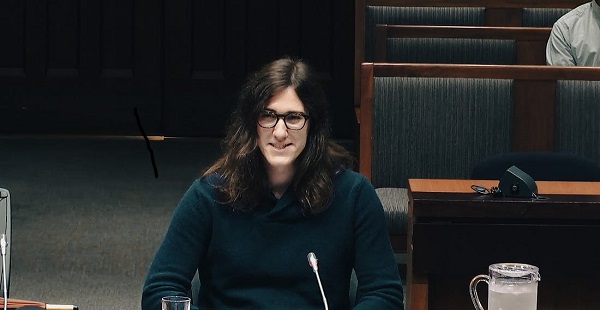
 2025 Federal Election21 hours ago
2025 Federal Election21 hours agoProtestor Behind ‘Longest Ballot’ Chaos targeting Poilievre pontificates to Commons Committee
-
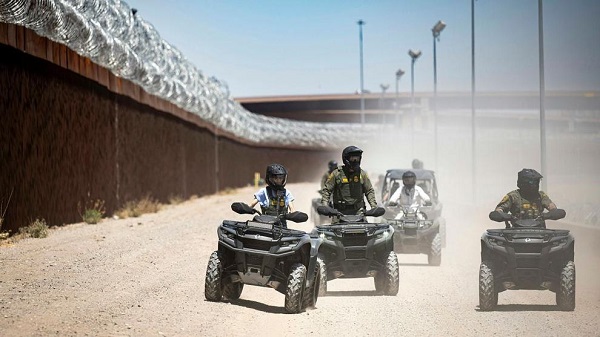
 illegal immigration2 days ago
illegal immigration2 days ago$4.5B awarded in new contracts to build Smart Wall along southwest border
-
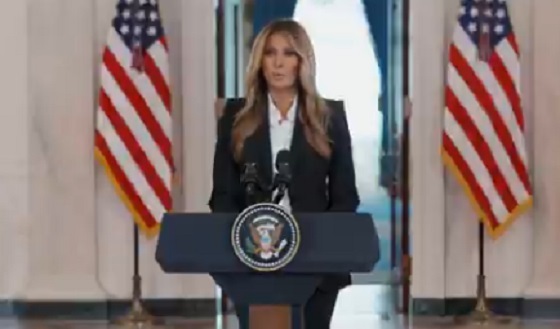
 International2 days ago
International2 days agoMelania Trump quietly reunites children divided by Ukraine war
-
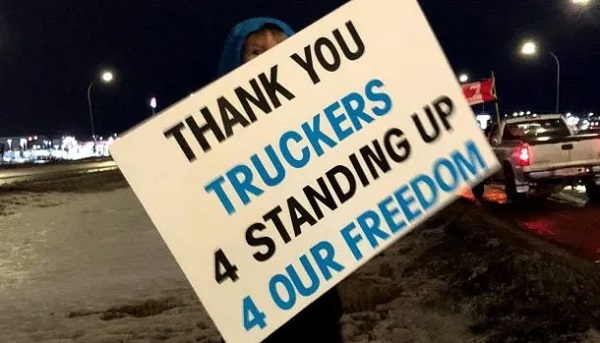
 COVID-192 days ago
COVID-192 days agoThe Trials of Liberty: What the Truckers Taught Canada About Power and Protest
-

 Business1 day ago
Business1 day agoTruckers see pay surge as ICE sweeps illegal drivers off U.S. highways
-

 Brownstone Institute1 day ago
Brownstone Institute1 day agoTrump Covets the Nobel Peace Prize
-

 International1 day ago
International1 day agoHamas releases all living hostages under Trump peace plan




